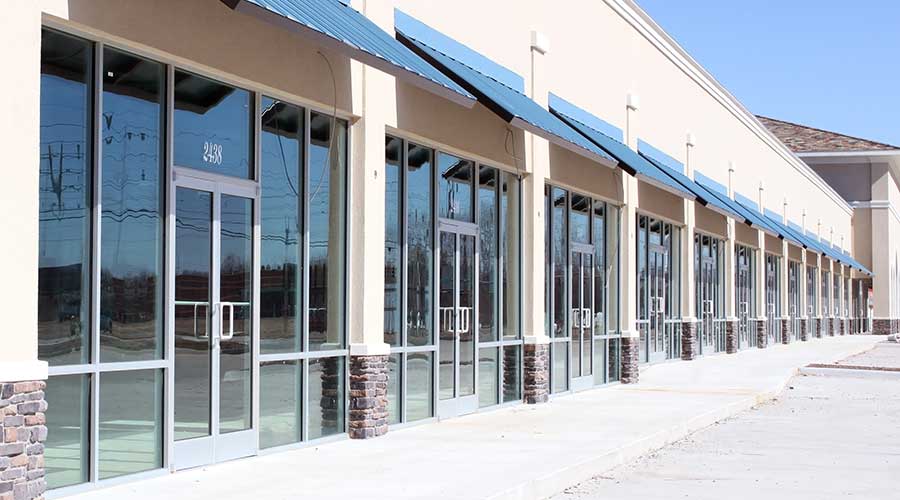Most people can name a retail location in their local area that is chronically empty or cycles through different businesses every couple of years. Following the wave of small businesses that closed starting in 2020, experts predict many major retail chains will close in 2023. Online shopping brought a new level of convenience to consumers that brick-and-mortar retailers cannot replicate, meaning people are going to see a lot more “Going Out of Business” signs than ever.
These vacant retail spaces provide a unique opportunity for other businesses, particularly healthcare systems, to reimagine the way the space can be used. Healthcare systems are increasingly renovating and expanding their facilities into vacant retail locations for three primary reasons:
Availability. There is a robust inventory of vacant facilities, and not just brick-and-mortar retail locations but office buildings, as well. At the start of the pandemic, workers in nearly every industry had to pivot to work from home out of necessity. Today, many of those industries continue to favor remote or hybrid work environments, leading many businesses to downsize their headquarters or move out entirely. From Main Street to suburban strip malls to office parks, thousands of square feet are available.
Speed. When a community identifies the need for a healthcare facility in a particular location, the sooner that gap can be filled, the better. Healthcare facilities take a long time to build, but if a structure is already built, key elements already are in place. The time and cost savings of not having to build from scratch can grow exponentially.
Infrastructure. Key elements already in place encompass more than what is inside the four walls of a building. For example, the exterior parking infrastructure is already in place. Whether that is a parking lot or garage, retail spaces anticipate people driving to their premises and already have established easy access by car. Inside these facilities, all the basic elements needed for a healthcare facility are done and established. Developers do not have to go through the public process of establishing new construction because the necessary foundational components, from HVAC to internet connectivity, already are in place.
Renovation considerations
These benefits are highly desirable, but their presence does not mean retail spaces are move-in ready for healthcare activities. Construction and renovation likely will be necessary depending on the facility’s intended use. For example, an outpatient facility with short appointment times will mean more patients more quickly, creating the need for more space for more vehicles. Notably, larger retail locations usually have sufficient parking structures, but it is still important to revise and assess throughout development.
Healthcare facilities managers involved in renovating these retail spaces need to consider a few other specific areas:
Mechanical. Healthcare facilities put a large strain on electrical systems, especially when compared to the electrical load a retail location was designed to handle. In addition to lighting, heating and cooling, additional computers and medical devices call for more energy output. Managers will have to examine where they can change out panels and subpanels to provide the appropriate amount of energy needed to give patients exceptional care.
Plumbing. Moreso than electrical needs, healthcare facilities tend to have greater plumbing needs than the average retail location. A retail building that might have accommodated one or two restrooms now will have to supply water to hand-washing sinks, eye-washing stations, toilets and more. Regardless of the final healthcare use of an existing facility, developers will need to closely examine plumbing functions and accommodate inevitable changes.
These conversations and decisions are the realities of healthcare’s future. Already, imaging centers, physical therapy and rehabilitation clinics, and cardiac and diabetic screening program facilities are moving into former retail locations. These kinds of patient treatment environments will continue to be conjoined to retail spaces as patients continue to drive the need for convenience.
As a population, people want to go to the doctor, the grocery store, get a haircut, and pick up lunch all in one trip. Consumers will push for smaller contained healthcare facilities that they can move into and out of quickly, and it is becoming more difficult to find available open land to build these kinds of healthcare facilities.
The pandemic drastically changed the way people work, shop and seek healthcare. Three years into the pandemic, facilities are continuing to adapt. This wave of building turnover comes as a confluence of who consumers desire more convenience and facilities that need to meet patients where they are. Turning vacant retail locations into healthcare facilities answers that demand with less time and expense than traditional new construction – a win-win for all.
Mike Wood is the vice president of planning, design and construction at Medxcel, specializing in the creation, direction, organization and administration of Medxcel’s national construction portfolio.

 Building Disaster Resilience Through Collaboration
Building Disaster Resilience Through Collaboration Amae Health Expands to New York City
Amae Health Expands to New York City Hospital for Special Surgery Opens Two New Facilities in New Jersey
Hospital for Special Surgery Opens Two New Facilities in New Jersey Should We Be Testing Toilet Water in Patient Restrooms?
Should We Be Testing Toilet Water in Patient Restrooms? Healthcare Union Petitions for Increased Staff Safety at HCA Florida Hospitals
Healthcare Union Petitions for Increased Staff Safety at HCA Florida Hospitals